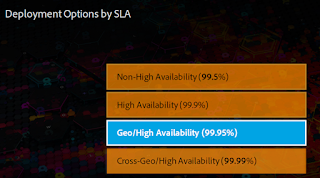Improve the performance of the Adobe Experience Manager(AEM) websites
This post explains my experience on improving the Adobe Experience Manager(AEM) website performance
"Cache as much as possible" - CDN layer:
The caching is the important thing to be considered for improving the performance, in AEM setup the dispatcher will be used for caching the static content.
The CDN can be added on top of dispatcher to distributed caching to support the caching in different region to provide better performance. As the CDN is distributed at least by region the user will be served from nearby region to improve the performance. in this setup publishers will be only receive the initial request and subsequent request will be served by CDN and dispatcher.
There are multiple CDN options like Akamai and AWS Cloud Front. The request flow diagram below
Cache-Control max-age header:
Specify the cache control header with required max-age value to control the amount of time the files are cached by browser.
Add higher max-age values for static resources so that the browser caching can be used optimaly for bettwr performance.
The max-age can be be added as part of the virtual host configuration. e.g
<filesMatch ".(css|js|)$">
Header set Cache-Control "max-age=2628000"
</filesMatch>
<filesMatch ".(jpg|jpeg|png|gif|html|ico)$">
Header set Cache-Control "max-age=900"
</filesMatch>
Versioning of CSS and JS files:
The performance gain is achieved through browser caching static files for specified time(max-age). The browser cache busting is important to update the modified static files in browser, say the browser has the CSS file cached for one month and you want to change the CSS. You need a strategy for breaking the cache and forcing the browser to download a new copy of the CSS.
Change the version number of the static files upon modification so that the browser cache will be updated with new file irrespective of the max-age configuration.
The versioning of static resources can be enabled in AEM through "ACS Commons Versioned Clientlibs" - https://adobe-consulting-services.github.io/acs-aem-commons/features/versioned-clientlibs/index.html











